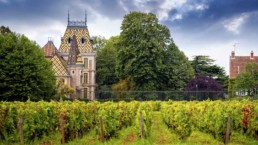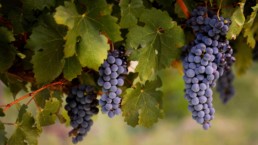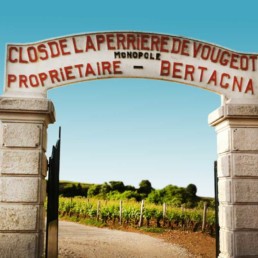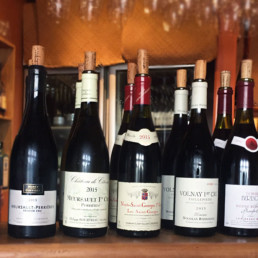This month we continue the endless journey that is Burgundy wine! The more one learns, the more one realises how much remains to be learned of this magical place in east-central France. As of 2015, Burgundy was designated a UNESCO World Heritage Site, spearheaded by one of its most famous sons and Domaines, Aubert de Villaine, of Domaine de La Romanee Conti.
Many vintage summaries and detailed commentaries begin in 1845 when discussing Burgundy wine. However, we know from archaeological research that viticulture was established in Burgundy as early as the second century AD; furthermore, evidence suggests that the Celts may have been working with vines in Burgundy earlier than the Roman conquest of Gaul in 51 BC. So we are looking at a history going back about 2,000 years!
Fast forward to the year 1935, this is when Burgundy’s classification system was developed into an AOC. This system is based on terroir so those sites with the best mix of soil, aspect, climate and quality over time, are deemed the highest classification.
The wines of Burgundy are classified as follows, starting at the highest order: Grand Cru, Premier Cru, Village and Regional.
Grand Cru
We begin at the top. Each Grand Cru has its own appellation. These wines are the pinnacle of grandeur – both white and red, they account for less than 1% of the region’s farming. They are the jewels of the Côte d’Or. All of the white Grand Crus are found in the Côte de Beaune. There is a red Grand Cru in Corton of the Côte de Beaune, other than that, all the Grand Cru reds can be found in the Côte de Nuits.
To be awarded a Grand Cru, the wine must be grown from grapes of the designated varietal, from a classified plot of land, from vines minimum 3 years of age and below a specific yield measured in hectolitre/hectare.
Then, the wine must be properly stored, aged, then available for sale. A Grand Cru wine should deliver an experience in the glass, showing intense aromatics, power and complexity of the highest order.
Premier Cru
The Premier Cru vineyards are measured by the same grape, yield and sourcing benchmarks as the Grand Crus. The Premier Crus also come from top sites and account for no more than 11% of the total Burgundian production. They are excellent wines, usually on average lesser so than the Grand Crus, however some Premier Cru sites can outperform the more average Grand Crus. These wines in particular, however, will usually command top dollar price tags.
Most Premier Crus are from named vineyards which appear on the wine label. For example, Puligny-Montrachet Premier Cru Les Pucelles – this wine comes from the Pucelles vineyard in the village of Puligny-Montrachet.
Village
For many of us, Burgundy’s Villages level wines is where the ‘real’ Burgundy begins. This is where we associate certain characteristics and styles that we relate to the wines of specific village, such as meaty/red fruit in Savigny, elegant/floral Volnay, spicy/perfumed Vosne-Romanée, nutty/buttery Meursault, and rose petal/minerally Chambolle Musigny.
There are the same grape restrictions as seen in the first two classifications (including some Aligoté) although in Villages level wines there is a slightly higher yield hl/ha allowance. There is plenty of value to have in these Villages wines, and often these wines contain portions of declassified wine from top sites. For example, in Puligny-Montrachet, any vineyard (be it Grand Cru, Premier Cru or a Village site) can be bottled and labelled with the name Puligny-Montrachet.
Regional
Regional level wines can have bottles with various labels such as: Bourgogne Rouge, Bourgogne Blanc, Bourgogne Pinot Noir, Bourgogne Chardonnay or Bourgogne Aligoté. There are also hilly areas in the Bourgogne Hautes Côtes de Nuits, Bourgogne Hautes Côtes de Beaune that fall within this classification.
The allowed yields per hectare are higher here than for the other classifications within the Burgundy AOC. There is also a unique opportunity to use the grape of Beaujolais in a wine labelled as Bourgogne Passetoutgrains, which is mainly Gamay Noir blended with a smaller proportion of Pinot Noir. Often the best quality wines are found neighbouring famous appellations such as Meursault or Vosne Romanee.
Spotlight on Burgundy Premier Cru Wines
This month we aim to focus and celebrate the Premier Cru designation in particular. There are over 1,200 wine labels in Burgundy, many of these now well out of the reach of the average wine consumer based on rarity, price and availability. Burgundy price increases have centred on the 700 total wines from AOC designated Grand Cru and Villages wines, plus the Premier Cru climat-labeled wines. Where the most highly coveted and sought after Grand Cru wines are among the worlds most expensive, there is plenty of joy and discovery to be had at the Premier Cru level, which can certainly command a high price tag yet offer a wider range in value and deliver classic, Burgundy terroir.
At Dhall & Nash Fine Wines we have been developing relationships with growers in Burgundy over the last decade and over this period have spent considerable time and investment to build up a list of Burgundy wines we are proud to supply to the NZ marketplace.




